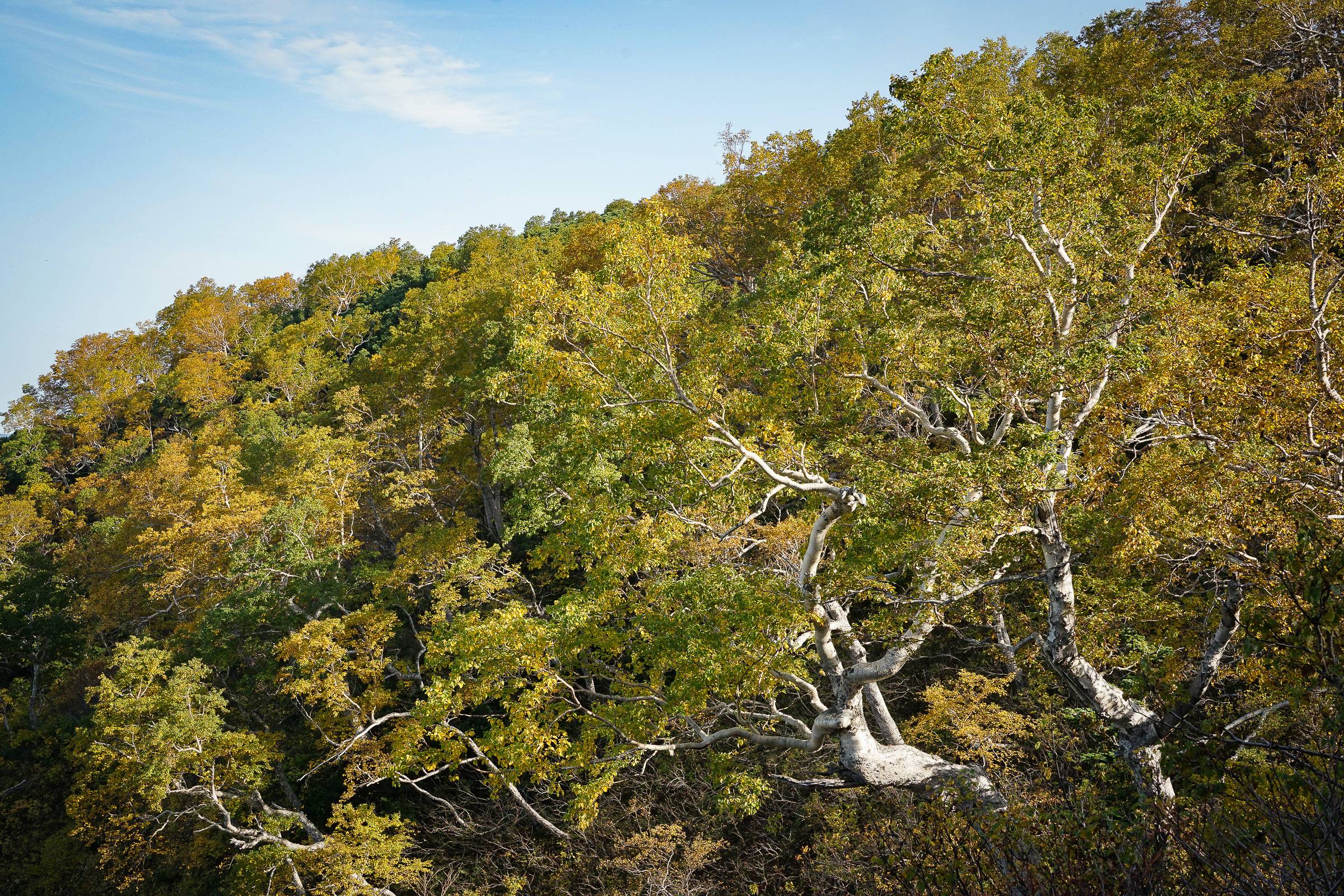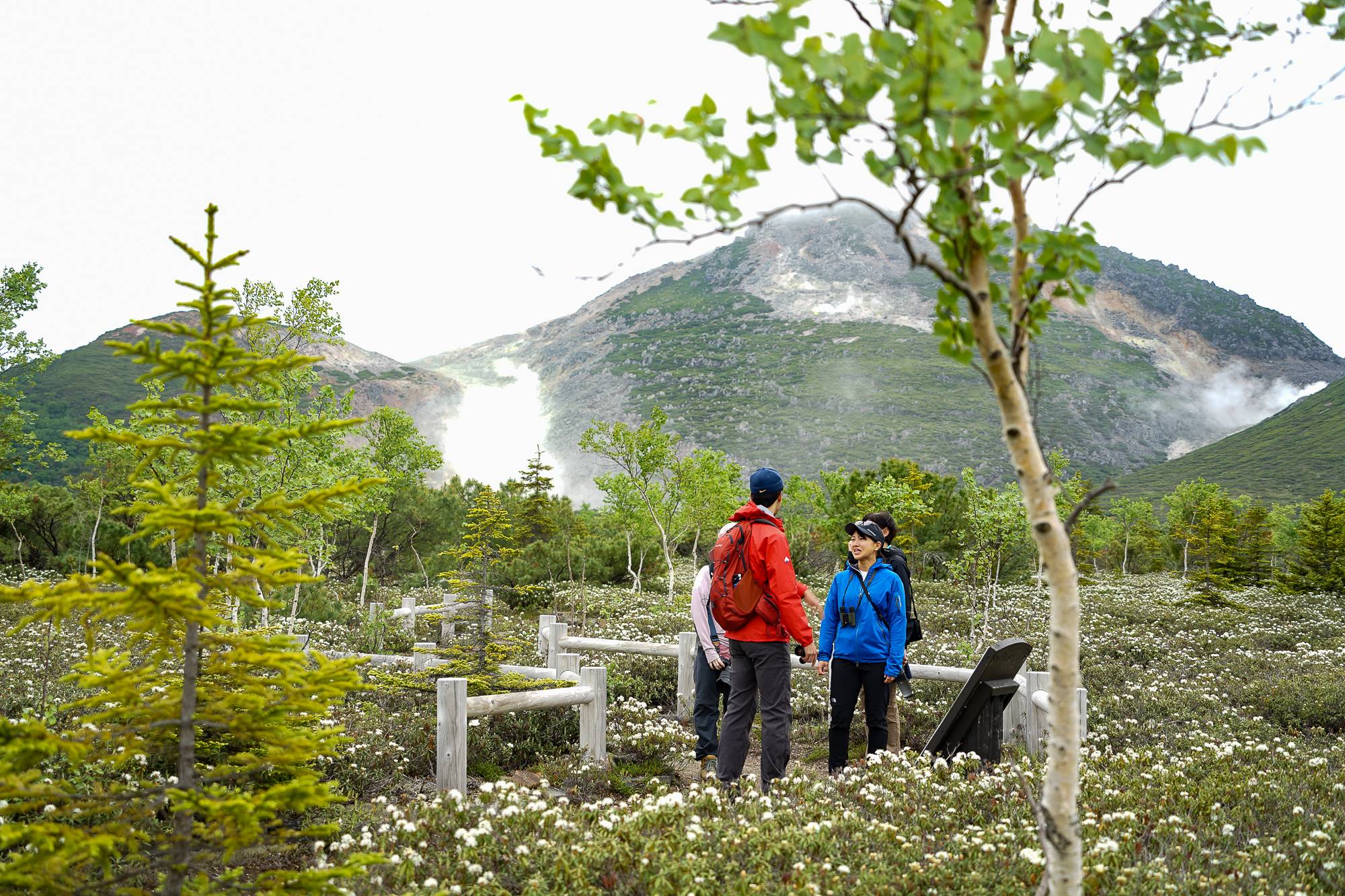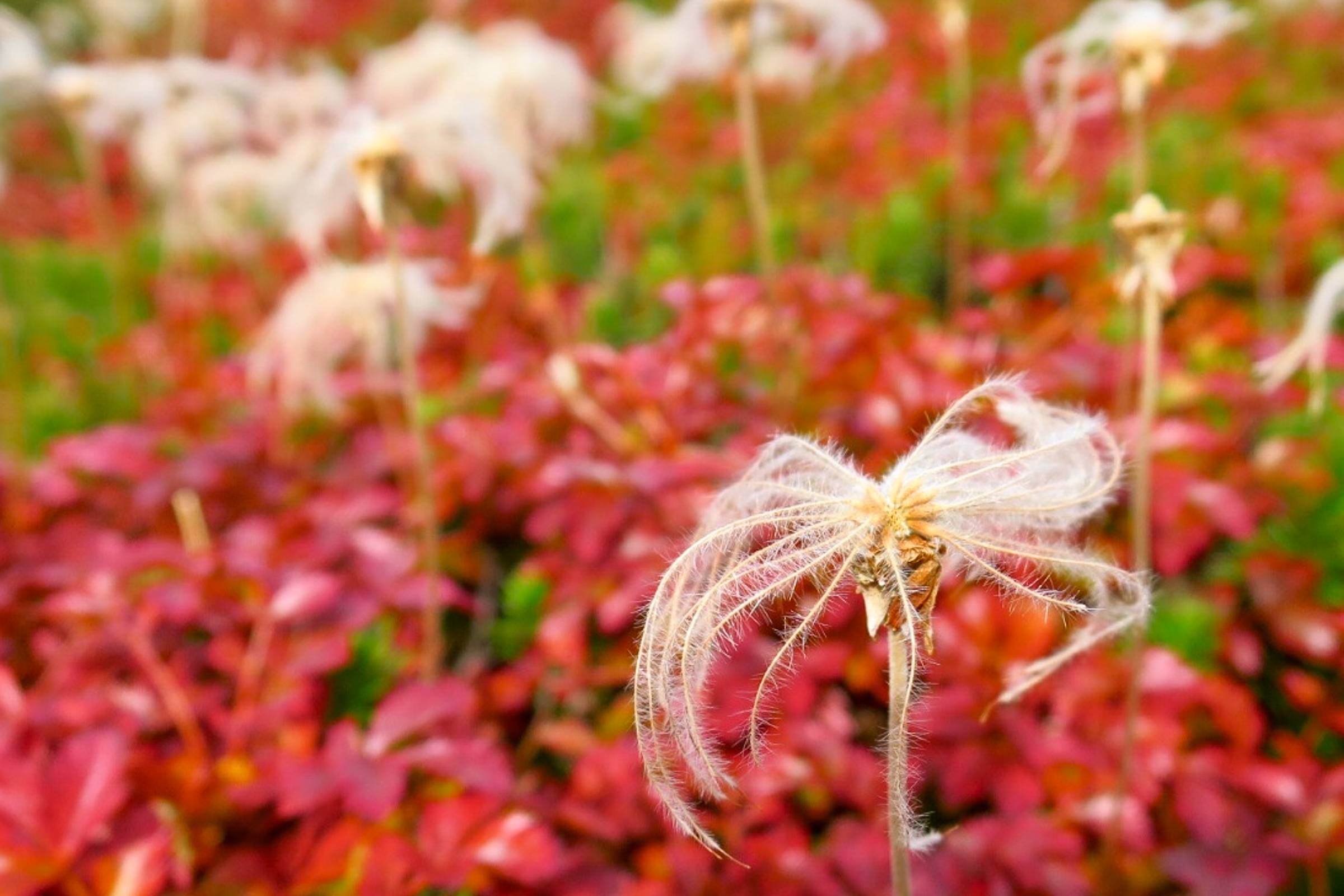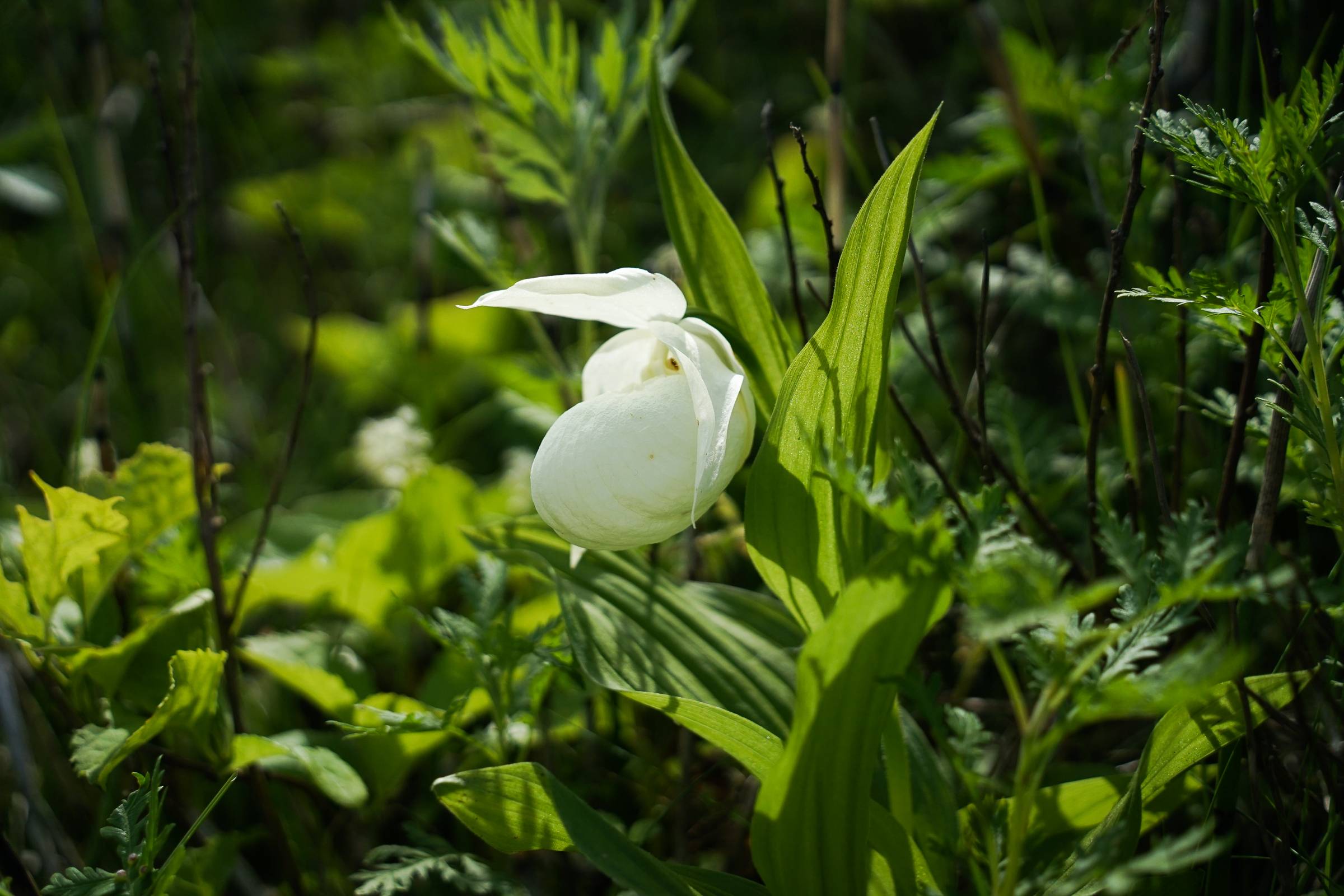If you’ve ever tried looking up Hokkaido’s flowers online, the chances are that the first images you’ll see will be colourful tourist flower meadows. As beautiful as these are, often the flowers planted are neither wild nor native to Hokkaido.
Bloomin’ Lovely! Hokkaido’s Trees and Flowers
Activity Guide
By Hattie

When visiting the mountains or the forest, however, it’s a different story. There are countless natural alpine plants and flowers all over Hokkaido whose praises are seldom sung! You will find yourself surrounded by a rich ecosphere of blooms, shrubs and trees wherever you go. The trouble is that there are so many that it can be hard to know what’s what!
So without further ado, here are some much-beloved alpine flora in Hokkaido that you should keep an eye out for on your trip!
Conifers #
As with other forests across Japan, most of the trees are made up of evergreen conifers. Here in Hokkaido, however, the forests are not dominated by the pine, cedar and cypress trees that are common on Honshu. Instead, the forest is more similar to the boreal forests of Siberia, full of species of fir and spruce.
You may be forgiven for being unable to tell them apart at first, so here are some tips to help you identify some of Hokkaido’s conifers!
Ezo Spruce (Picea jezoensis)
First, and most common of all, you have the Ezo Spruce, known as ezomatsu in Japanese. These trees can grow to staggering heights and are identifiable by the “scaled” bark on their trunk and their sharp needles. Their cones tend to be long and skinny and a reddish colour and often lie scattered on the forest floor, stripped of their seeds by hungry squirrels!
Sakhalin Spruce (Picea glehnii)
Another species of spruce growing in the forest is the Sakhalin Spruce - the emblem tree of Hokkaido. Their appearance is similar at first glance to the Ezo Spruce, but look more closely and you’ll see that there are quite a few differences! The scales that make up their bark are bigger than that of the Ezo Spruce and have a slightly reddish tone underneath. This colour is the origin of their Japanese name, aka-ezomatsu which means “red ezo spruce”! Their needles are rounded and not as sharp as the Ezo Spruce, and their pine cones are smooth and a grey-brown colour.
Sakhalin Fir (Abies sachalinensis)

The Sakhalin Fir is another common tree you will find in Hokkaido’s forest. They are called todomatsu in Japanese. These are fairly easy to identify as they look like Christmas trees - wide at the bottom, skinny on the top! Their branches also tend to angle up as they grow, unlike the branches of a spruce which angle down. Their needles are soft and bendy, and have a very pleasant scent, like a living air freshener! Their trunks are also smooth and commonly play host to a number of lichen and moss species.
Siberian Dwarf Pine (Pinus pumila)

Finally, at higher altitudes you may find the Siberian Dwarf Pine or Japanese Stone Pine, known as haimatsu in Japanese. These trees grow thickly together, creating a natural hedgerow that is quite challenging for human hikers, but heaven for the many small animals and birds that make the mountains their home. It tends to be squat, with branches growing outwards instead of upwards, and can often take on some quite unusual shapes after years of being buffeted by high mountain winds! Their pine cones are small and a colourful pink.
Rowan Trees #
These trees are unique with their bright red berries, which cling onto the tree all the way through to the spring thaw. They provide vital food for birds during Hokkaido’s long winter. Both of the below trees have leaves that turn a dazzling orange in the autumn, transforming the mountains during Hokkaido’s autumn leaf season.

Japanese Rowan (Sorbus commixta)
The most common variety is the Japanese Rowan or nanakamado which you’ll be able to identify easily by its multi-leaved stems. It also has pretty and fragrant white flower clusters in spring (beloved by bees).
Urajiro Rowan (Sorbus matsumurana)
The Urajiro Rowan or urajiro-nanakamado is another rowan tree you’re likely to come across in Hokkaido’s mountains. These trees are hard to tell apart from the Japanese rowan at first glance but upon closer inspection, you’ll see that they are much smaller and more squat than the Japanese rowan. Their leaves are also noticeably smoother. Their flowers tend to be bigger with larger petals than the small blooms on the Japanese rowan.
Birch Trees #
These trees are symbolic of the Hokkaido landscape and Hokkaido’s forests. Like Hokkaido’s conifers and rowans, there are a lot that look the same but are quite easy to tell apart once you know their subtle differences!
White Birch (Betula platyphylla)

The first is the shirakaba, or White Birch. This tree is very popular in Hokkaido both as a part of the natural forests and for ornamental purposes! It is important to distinguish this from silver birches growing in Europe, as it is in fact a distinctly different species, despite the visual similarities. White Birch is easily recognised by its pure white, paper-like bark growing on its singular, straight trunk with eye-like marks and thin, black branches. In spring and summer, it has wonderfully vivid green, teardrop-shaped leaves which turn sunshine yellow in the autumn.
Erman’s Birch (Betula ermanii)

Another birch you are likely to come across in Hokkaido is the dakekanba, or Erman’s Birch. This tree is more commonly found at higher altitudes and tends to split off into many branches closer to its base and has a more twisted, crooked look to it than the straight white birch. It also tends to have more of a squat appearance compared to the white birch. Its leaves are similar, but their ridges are much more defined. In autumn, it turns a beautiful gold colour, part of the beautiful patchwork of Hokkaido’s autumn landscapes.
Monarch Birch (Betula maximowicziana)
Finally, there is the Monarch Birch, the udaikanba. This grand tree tends to have thicker trunks than either the white or Erman’s Birch, and its bark is less paper-like and more rough and coarse. Its bark is also much darker, closer to a muddy grey than white. Its canopy tends to spread out much wider than either of its cousins, forming a triangular shape when viewed from a distance. Its leaves are also huge– they can be as big as 15cm, much larger than those of other birch trees!
Milky Way Rhododendron (Rhododendron diversipilosum) #

This plucky plant, called ezo-isotsutsuji in Japanese, is a cousin of the rhododendron and can be found in regions where many plants and flowers would struggle to survive - even in areas engulfed in volcanic gases! It is commonly found in marshlands and growing out from between boulders on rocky mountain slopes. It is particularly common around the Lake Akan & Lake Mashu area and you can walk through a vast landscape of Milky Way Rhododendron at the base of Mt. Io.

You may smell it before you even see it - it has a wonderfully sweet fragrance and as such is a lure for busy honey bees! The Ainu also use the leaves of this plant to make tea.
Aleutian Avens (Sieversia pentapetala) #

Known as chinguruma in Japanese, this is one particular blossom that is emblematic of Hokkaido’s mountains. Around June-July, these pretty white flowers bloom en-masse across Daisetsuzan National Park and other high-altitude areas in Hokkaido.
In autumn, they undergo a transformation and become adorable, fluffy pom-poms! Their leaves also turn a deep red, meaning that you can enjoy their autumn colours even above the tree line.

While you can find them across Daisetsuzan National Park, they are most prolific on the Susoaidaira Plateau between Sugatami Pond and Nakadake Onsen on Mt. Asahidake. The sight of an enormous field of beautiful flowers stretching out as far as the eye can see is astonishing.

Rhododendron aureum #

This evergreen shrub is quite different from the colourful rhododendron bushes that decorate traditional Japanese gardens. It is called kibana-shakunage in Japanese and it is one of the earliest plants to bloom in Daisetsuzan National Park. They have the same trumpet-like flowers as their ornamental cousins, but they are a pure white as opposed to pink or purple. Blossom clusters also tend to be made up of fewer flowers than the crowded, pom-pom-like growths of ornamental rhododendrons! Their size is also considerably more squat than their fancy cultivated cousins, growing close to the ground in the scree on mountainsides and mountain grasslands.
Mountain Heather (Phyllodoce caerulea) #

These flowers are not like the heather you may know from your own country. Their tiny and often bright flowers stand out sharply in their alpine habitat. Their bell-like blooms droop downwards, emerging from stems that could be easily mistaken for tiny fir trees to those not in the know! The different colours that you may see - white, pink and so on - are in fact all different species. While both the genus and nipponica species is called tsugazakura, the white ones are called aonotsugazakura (Phyllodoce aleutica or Aleutian Mountain Heath) and the ones in Hokkaido are called ezo-no-tsugazakura (Phyllodoce caerulea or Purple Mountain Heath).

Although insects are not so common up in the high altitudes where they grow, they produce a sweet nectar inside their cupped petals - a reward for adventurous bees that make it this far up!
Miyabe Sibbaldia (Potentilla miyabei) #

These perennial yellow flowers are, believe it or not, a close relative of the rose! Their Japanese name is meakan-kinbai and they are determined little flowers, growing even in the toughest and windiest conditions on mountains.
There are a number of similar yellow five-petalled flowers that grow in Hokkaido’s mountains, but you can recognise these by their greenish tint, hairy leaves and spaced-out petals.
Rebun Lady’s Slipper Orchid (Cypripedium macranthos var. flavum) #

This beautiful flower is endemic to Rebun Island off the coast of Wakkanai. In other words, Rebun island is the only place in the world where you can find it growing wild!
This rare flower was once almost poached to extinction. However, locals and the island’s authorities intervened and it now grows in areas that are heavily protected and often monitored by cameras. Thanks to these efforts, its numbers are rebounding. These days, when the orchid blooms throughout June, it draws crowds of admiring visitors! It is instantly recognisable for its bulbous, ivory-coloured blooms.
Lingonberry (Vaccinium vitis-idaea) #

These sweet little plants can often be found growing in sandy or stony mountain soil across Hokkaido's peaks. It's also known as cowberry in English, and the Japanese call it kokemomo - which, translated literally, means "moss peach"! In summer, you can recognise them from their cute, bell-shaped flowers, which vary in colour from white to a pale pink. You might wonder how you can avoid confusing these with the similar Mountain Heather - the answer is, look for the leaves! You'll notice that the lingonberry's leaves are thick and rounded and turn bright red in autumn, whereas mountain heather is an evergreen, with small and thin leaves that look a bit like conifer needles.

Once their blooms wither, the flower's ovary swells to become tasty red berries. The Ainu, Hokkaido's indigenous people, call these berries frep. They make a very tasty jam, so if you should spy lingonberry jam on your travels among Hokkaido, consider taking one home as a souvenir!
A Floral Fantasy Awaits
This is just a taste of the beautiful flowers and trees that await you in Hokkaido! This is a land with an incredible natural history stretching back millenia, with a unique ecosystem waiting to be explored. If you’d like to learn more about Hokkaido’s flora, the best way to do so is to pay us a visit! Our guides will be happy to share their knowledge with you and teach you all about the amazing plants, trees and flowers to be found here.
Well, we’ll leaf you to your thoughts… Hopefully we have planted the seed of a Hokkaido trip in your heart!
Ready to hit the trail?
Experience the best of Hokkaido's hiking on our hiking tours.